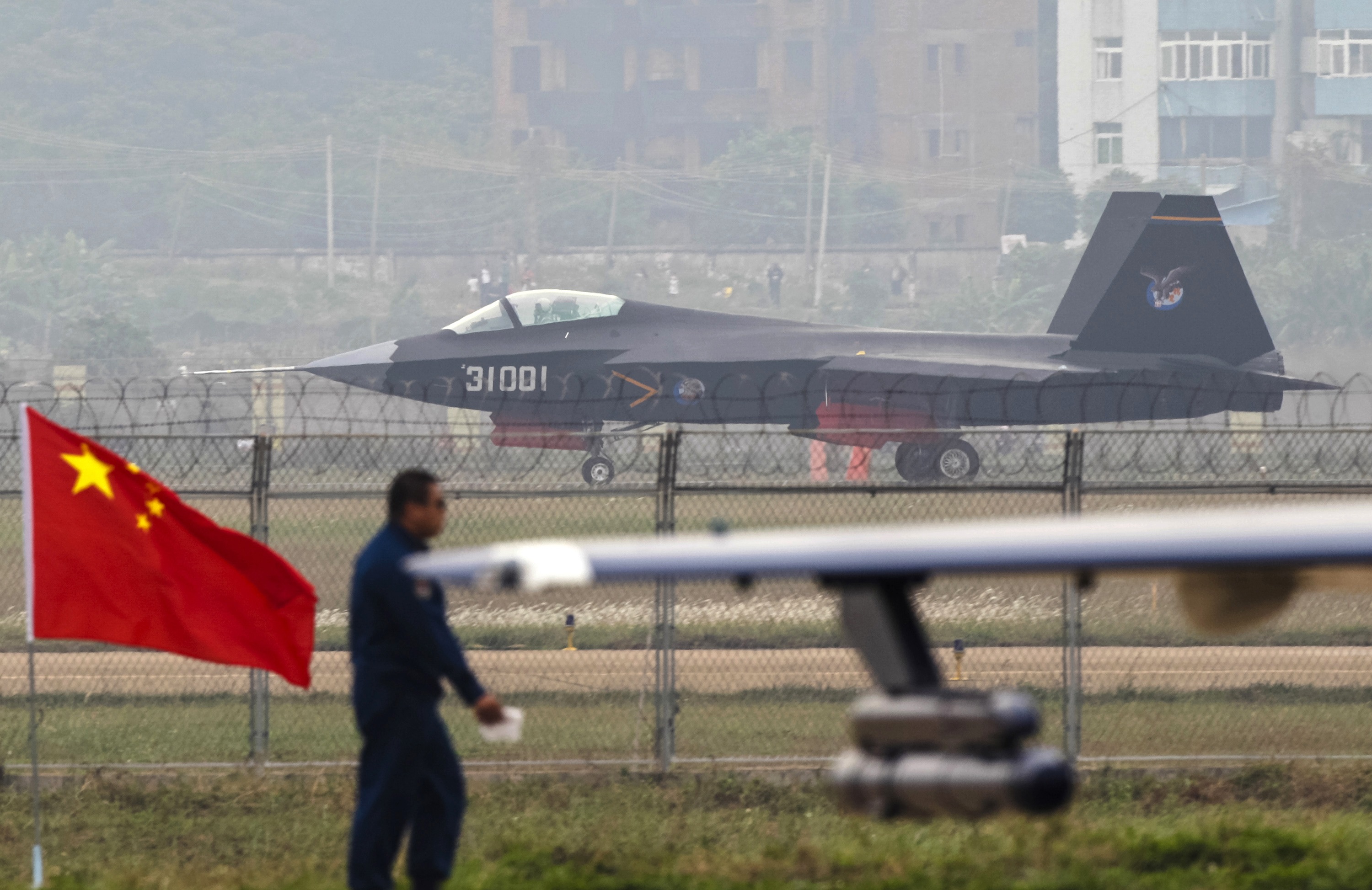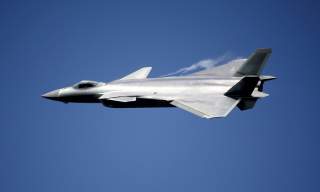Dirty Little Secret: How China Built Its Military Might (Thanks to America and Russia)
Protest as it may, Beijing is well know to have stolen technology from a number of nations including Russia and the United States.
The People’s Republic of China is forcefully denying that it steals dual-use technologies and intellectual properties from other countries such as the United States to advance its military capabilities. Beijing is also denying that it poses a nuclear proliferation threat around the world.
Responding to U.S. assistant secretary of state for international security and nonproliferation Christopher Ford’s statements accusing China of illicitly obtaining advanced American technologies through means such as civil nuclear cooperation for military purposes, Chinese Foreign Ministry Spokesperson Hua Chunying forcefully denied the allegations.
“The accusation against China by the U.S. official is entirely groundless and irresponsible,” Hua said during a press conference on July 19 in Beijing. “We firmly oppose that.”
Ford—speaking at a Center for Strategic and International Studies event in Los Alamos, New Mexico, on July 11, 2018—said that China is actively breaking down barriers internally between its military and civilian sectors. As such, technology exported to China for civilian purposes are almost certainly going to be repurposed to support Chinese military programs.
“If any given technology is in any way accessible to China, in other words, and officials there believe it can be of any use to the country’s military and national security complex as Beijing prepares itself to challenge the United States for global leadership, one can be quite sure that the technology will be made available for those purposes – pretty much no matter what,” Ford said.
While China might sign end-user certificates and offer other assurances that American technology will not be repurposed for military use, the United States does not accept those assurances.
“What credence can one give, in China, to the kind of institutional firewalls and end-use commitments that are so important, in many other countries, to reassuring suppliers of advanced goods that any given technology transferred there will not be diverted to military or other national security purposes?” Ford said.
“Unfortunately for those who have grown accustomed to extensive engagement with China’s outward-facing economic and scientific development in recent decades, the answer is simple: very little credence can be given to China’s commitments.”
Indeed, Ford said that Chinese “military-civil fusion” is very deliberate on the part of Beijing.
“There is absolutely nothing haphazard or inadvertent about this, for it is a matter of deliberate and explicit Chinese national policy and high-level prioritization,” Ford said.
“China has set forth an ambitious national strategy, which Communist Party General Secretary Xi Jinping personally oversees. Chairman Xi sits on a central level steering committee overseeing China’s national plan to break down all barriers between the civilian and military technological spheres by ‘fusing’ the defense and civilian industrial bases through what the Chinese call ‘military-civil fusion.’”
Hua took exception to Ford’s statements and suggested that Washington is being hypocritical.
Recommended: What Will the Sixth-Generation Jet Fighter Look Like?
Recommended: Imagine a U.S. Air Force That Never Built the B-52 Bomber
Recommended: Russia's Next Big Military Sale - To Mexico?
“Promoting civilian-military integration (CMI) is a widely accepted practice of the international community, the U.S. included,” Hua said.
“China's CMI strategy is aimed to effectively integrate military and social resources and promote the integrated development of national defense and social and economic sectors. There is no such a thing as employing the CMI to ‘steal’ or ‘transfer’ foreign technologies. Over the years, China and the U.S. have conducted civil nuclear cooperation on the basis of mutual benefit and win-win results, which serves the interests of the industries and the national interests of both countries. The cooperation strictly complies with relevant international obligations and the relevant agreements between the two sides.”
Ford also pointed to Chinese nuclear weapons proliferation activities.
“Much has been said, over the years, about Beijing’s willingness to condone – or perhaps even to promote – dangerous transfers to proliferators,” Ford said.

“During my first tour at the State Department beginning in 2003, for instance, we worried a great deal about the alarming propensity of Chinese entities, with or without government connivance, to transfer proliferation-facilitating items to countries such as Iran and Pakistan. More recently, much attention has been paid to the degree to which China has been willing to join international efforts to impose crippling sanctions on North Korea in response to its development of WMD and missile capabilities that have gravely destabilized the Asia-Pacific region.”
The Chinese denied that Beijing has proliferated—or would ever proliferate—nuclear weapons technology.
“China is firmly opposed to the proliferation of weapons of mass destruction (WMD) and their means of delivery,” Hua said.
“We have been strictly fulfilling the international non-proliferation obligations and relevant international commitments, comprehensively and completely implementing relevant Security Council resolutions and actively participating in the international non-proliferation process. Over the years, with a great sense of responsibility, China has gradually set up a well-established non-proliferation and export control system.”
Protest as it may, Beijing is well know to have stolen technology from a number of nations including Russia and the United States.
One of the most visible examples of Chinese technology theft are the Shenyang J-11, J-15 and J-16 fighters, which are based on unlicensed copies of the Russian Sukhoi Su-27 Flanker and its many derivatives. Moreover, Chinese stealth fighters such as the Chengdu J-20 and Shenyang J-31 are largely based on technologies stolen from the United States.
One prominent example of Beijing’s industrial espionage activities is highlighted in the Pentagon’s 2017 report to Congress on the Chinese military.
“In August 2016, U.S authorities sentenced a naturalized U.S. citizen to 50 months in prison for conspiring with a Chinese national to violate the Arms Export Control Act,” the report states.
“The pair attempted to acquire and export illegally jet engines used in the F-35, F-22, and F-16 fighter aircraft; the MQ-9 unmanned aerial vehicle; and technical data related to these items. The Chinese national—described as a ‘technology spy’ working on behalf of the Chinese military—sought to copy items obtained from other countries and expressed interest in stealth technology.”
Chinese industrial espionage will only intensify as times goes on as Beijing struggles to catch up to the United States in military technology.
“China is actively pursuing an intensive campaign to obtain foreign technology through imports, foreign direct investment, industrial and cyberespionage, and establishment of foreign R&D [research and development] centers,” the Pentagon report reads.
“Chinese defense S&T [science and technology] organizations and classified PLA intelligence provide technical targeting requirements to guide the work of collection units in open-source collection and analysis, and human capital transfer and exchanges that no longer focus solely on ethnic Chinese, but also individuals with relevant placement and access.”
Chinese espionage activities to acquire American technology to gain a military advantage will continue to grow and intensify. It’s about time Washington took measures to counteract Beijing’s activities in this sphere.
Dave Majumdar is the defense editor for the National Interest. You can follow him on Twitter:@davemajumdar.


